For 1990-2009 cars only
Tools Required
| • | J 24086-B (KM-427) Piston Pin Remover/Installer |
| • | KM-470-B Angular Torque Gage |
| • | J 45059 Angle Meter |
Removal Procedure
- Remove the cylinder head with the intake manifold and exhaust manifold attached. Refer to Cylinder Head Replacement .
- Remove the oil pan. Refer to Oil Pan Replacement .
- Remove the oil pump/pickup tube bolts.
- Remove the oil pump/pickup tube.
- Move the piston to the bottom of the piston stroke.
- Mark the connecting rod cap.
- Remove the connecting rod cap bolts.
- Remove the connecting rod cap and lower connecting rod bearing.
- Remove the upper piston connecting rod bearing.
- Ridge ream the cylinder wall.
- Remove the piston.
- Use a piston ring expander tool to expand the piston rings.
- Remove the piston rings.
- Remove the piston pin from the piston and connecting rod assembly using the J 24086-B (1).
- Separate the piston from the connecting rod.
Caution: Refer to Safety Glasses Caution in the Preface section.



Caution: Handle the piston carefully. Worn piston rings are sharp and may cause bodily injury.
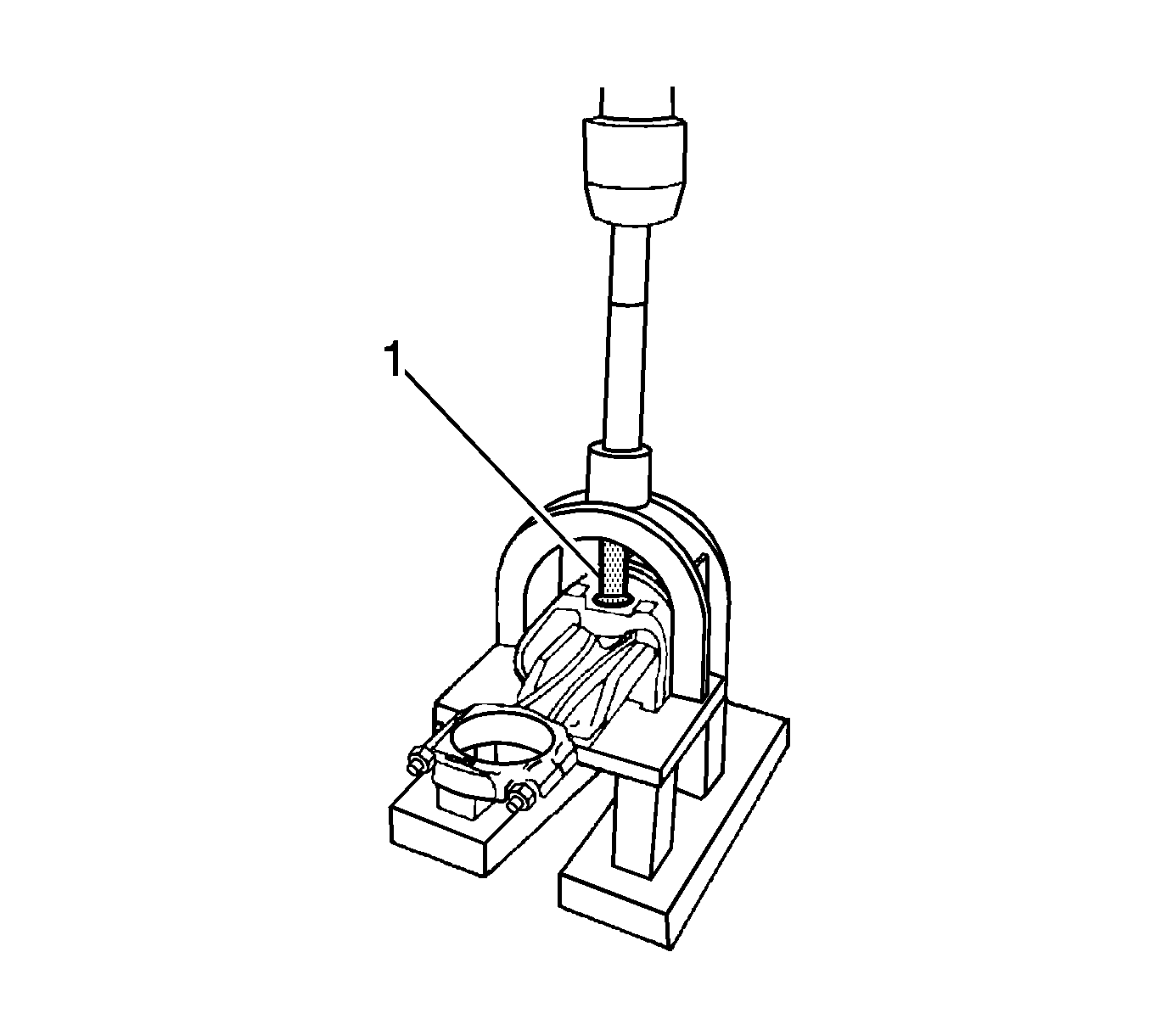
Installation Procedure
- Align the notch on the piston and connecting rod so that the proper sides will be facing the front of the engine.
- Install the piston pin guide through the piston and the connecting rod.
- Coat the piston pin with clean oil.
- Install the piston pin into the opposite side of the piston.
- Install the piston pin into the piston and connecting rod assembly using the J 24086-B (1).
- Select a set of new piston rings.
- Measure the piston ring gap using a feeler gage. Refer to Engine Mechanical Specifications .
- Increase the piston ring gap by carefully filing off excess material if the piston ring gap is below specifications.
- Measure the piston ring side clearance using a feeler gage. Refer to Engine Mechanical Specifications .
- If the piston ring is too thick, try another piston ring.
- If no piston ring can be found that fits to specifications, the piston ring may be ground to size with emery paper placed on a sheet of glass.
- Install a piston oil ring, the expander, then the 2nd piston oil ring to the bottom ring groove of the piston.
- Install the 2nd compression ring to the middle ring groove of the piston.
- Install the top compression ring to the top ring groove of the piston.
- Use a piston ring expander to install the piston rings. Do not expand the piston rings beyond the expansion necessary for installation.
- Stagger the piston oil rings (2), the oil ring rail gaps (3), the 2nd compression ring (4), and the top compression ring in relation to the notch on the top of the piston (1).
- Lubricate the cylinder wall and the piston rings with clean engine oil.
- Install the piston using a ring compressor and a wood handle. Guide the lower connecting rod end to prevent damaging the crankshaft journal.
- Install the connecting rod cap and bearings. Refer to Crankshaft and Bearing Cleaning and Inspection .
- Install the connecting rod cap bearing bolts.
- Install the oil pump/pickup tube.
- Install the oil pump/pickup tube bolts.
- Install the oil pan. Refer to Oil Pan Replacement .
- Install the cylinder head with the intake manifold and the exhaust manifold attached. Refer to Cylinder Head Replacement .

Caution: Avoid contact with moving parts and hot surfaces while working around a running engine in order to prevent physical injury.
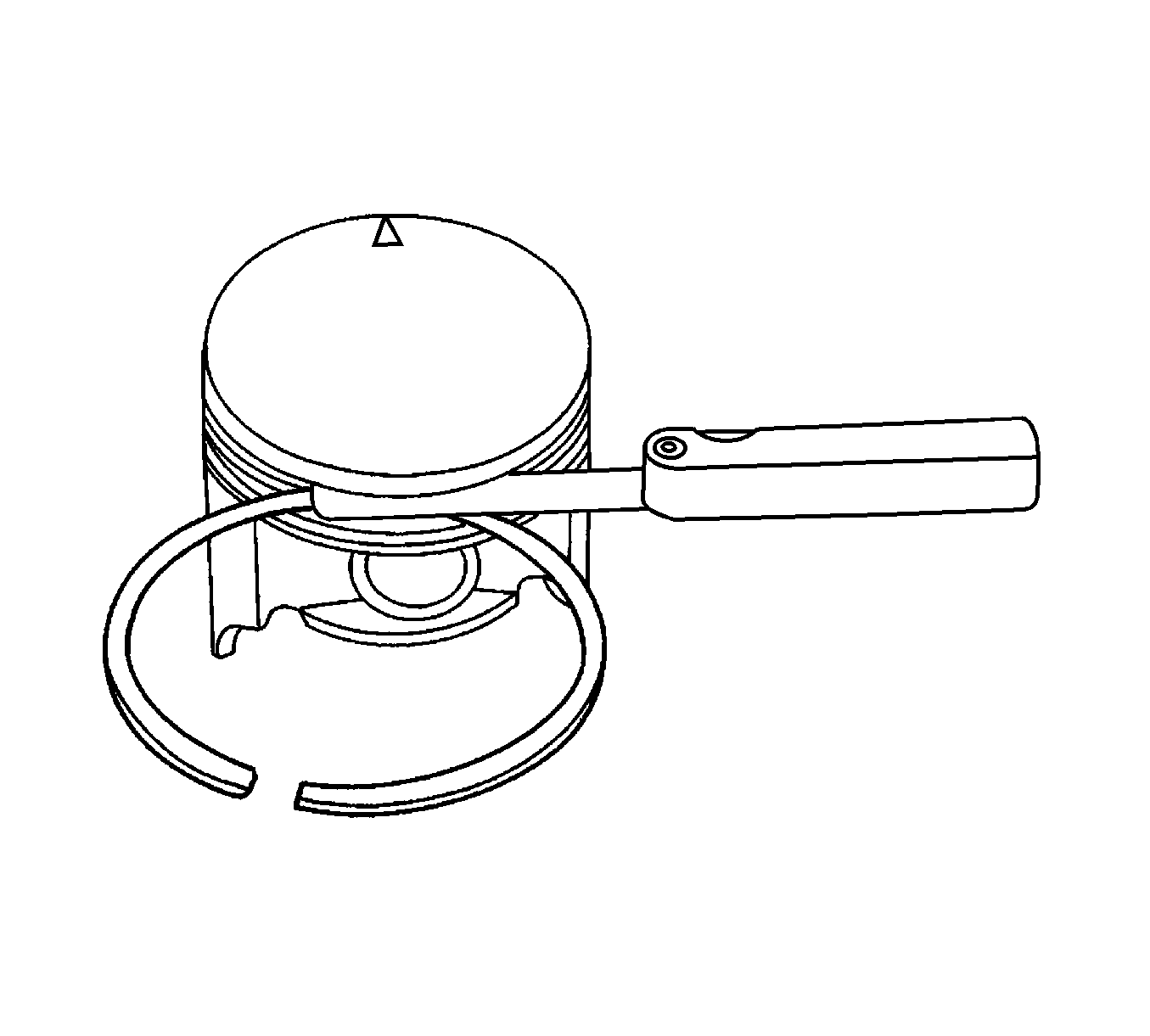

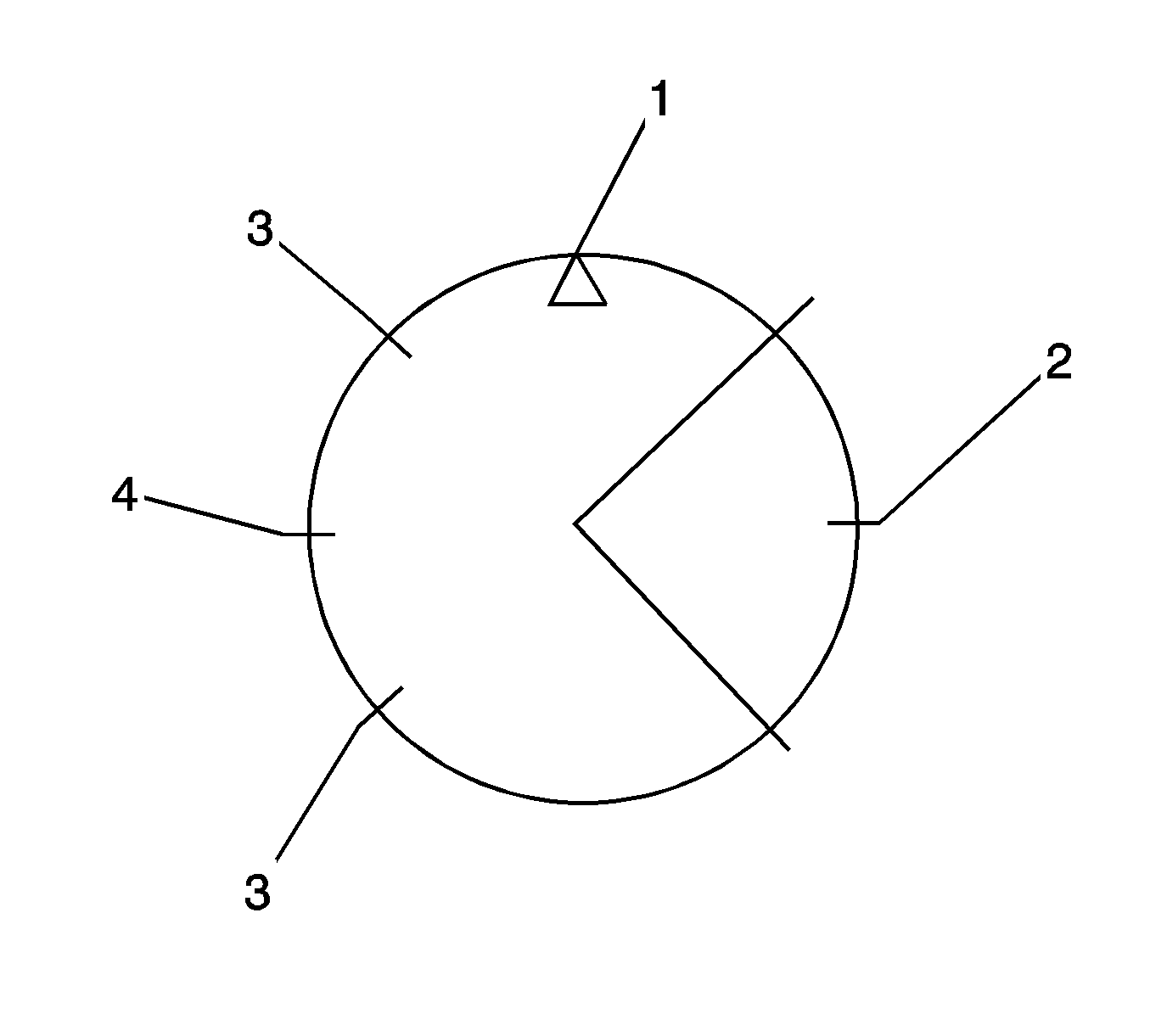
Notice: Use a piston ring expander to install the piston rings. The rings may be damaged if expanded more than necessary.
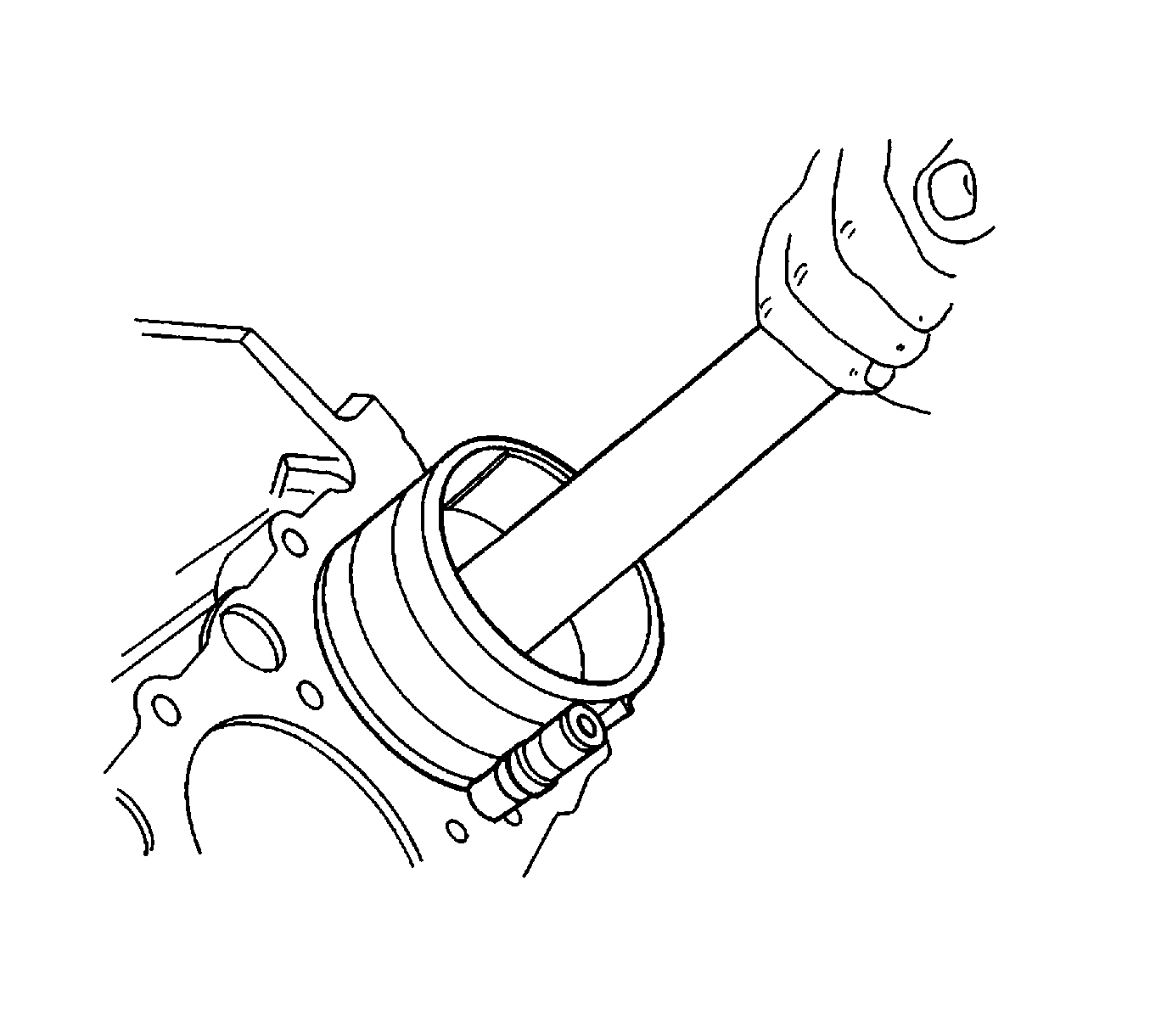
Notice: Refer to Fastener Notice in the Preface section.
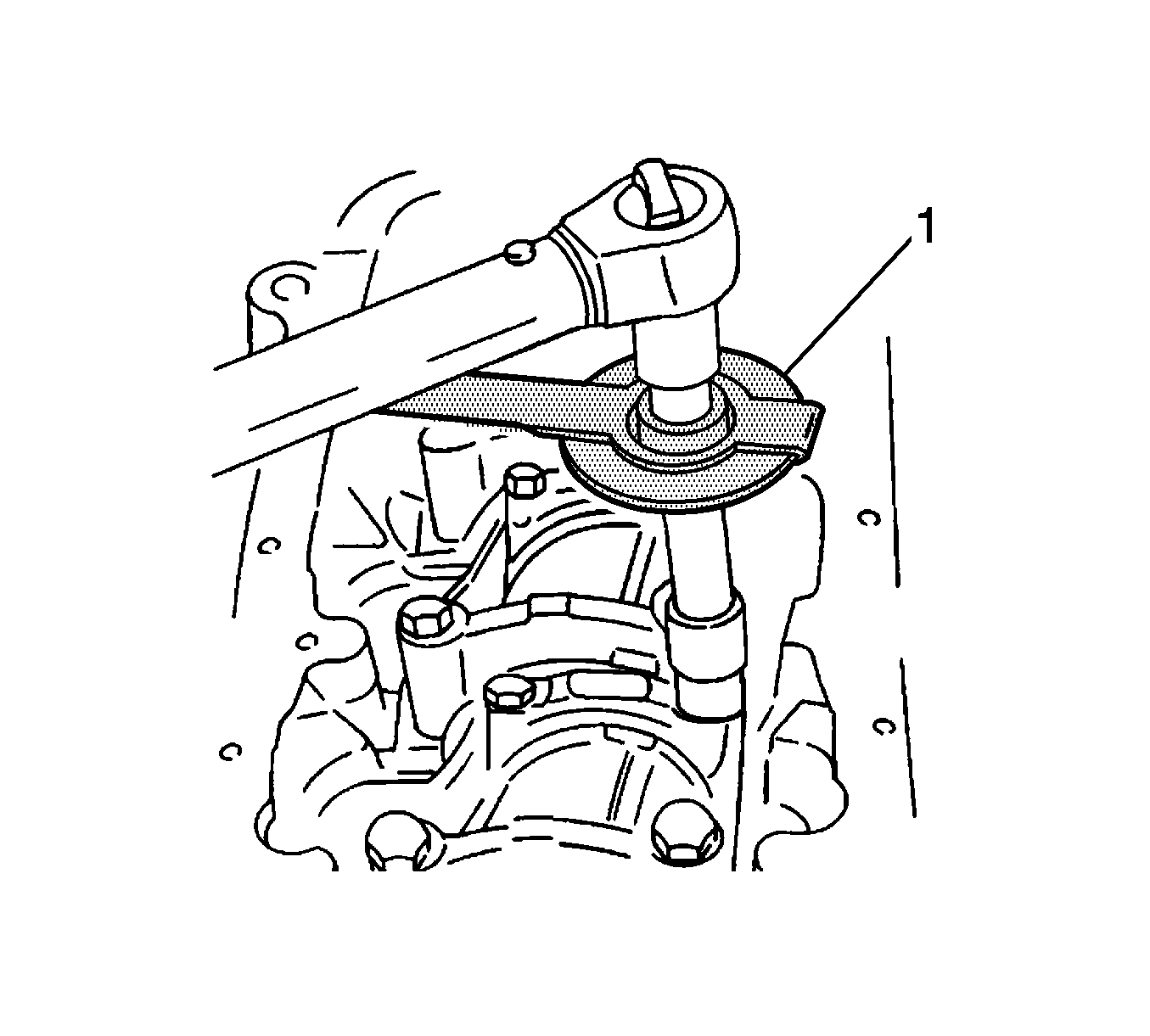
Tighten
Tighten the connecting rod bearing cap bolts to 25 N·m (18 lb ft). Using the
J 45059
or
KM-470-B
(1), tighten one turn of 30 degrees plus 15 degrees.
Tighten
Tighten the oil pump/pickup tube and support bracket bolts to 10 N·m (89 lb in).
